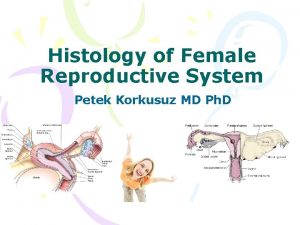Huayiyiyu a Chinese corpus to study Asian languages

- Slides: 1

Huayiyiyu, a Chinese corpus to study Asian languages in the 15 C – 16 C KIM, Ji-eun Department of Korean Linguistics and Literature, Seoul National University In a Nutshell This study is a humble suggestion to try a new way to study Historical Phonology of Asian languages by revisiting Huayiyiyu (華夷譯語) , Chinese-Barbarian dictionary published to train official interpreters in the 15 th – 16 th centuries. • Historical Linguistics has been relying on comparative method and internal method (Shields, 2010), while they have considerable limitations at the same time. • The comparative method has relative temporal limitations, sociohistorical limitations, linguistic domain limitations, and “delicacy” limitations (Harrison, 2008). • The internal method shares the limitation of the comparative methods, when the gap between orthography and phonology could be another problem when adopting the data from a single language. It is because the orthography of a language is not the exact transcription, but the mnemonic of a language (Lass, 2015). • However, there has been little study on new methods to overcome the limitations of these two primary methods. • “Huayiyiyu (華夷譯語)” is a general term that indicates the dictionaries between the Chinese language and neighboring foreign languages published by Chinese government between early Ming (明) dynasty and Middle Qing (淸) dynasty: Huoyuanjie, Mongolian Mashayihei, etc. Siyiguan Mongolian, Jurchen, Tibetan, Persian, Uighur, Burmese, Thai, Sanskrit, Tai Transcription Variet y Chinese characters Huitongsiyiguan (36 languages) Chinese characters (1) Reliable studies were selected and compiled, which will be published and shared after enough analysis and publications. Era Written 14 th (2) The Transcription rules of Huayiyiyu are as below: Rule 1. The morphemes were transcribed phonetically instead of phonemically. Rule 2. each morpheme was transcribed in the same manner for each of the wordlist. Rule 3. Elements which do not fit into the Chinese syllable structure can be the object of Supplementary Transcription (ST) i. e. the first element of consonant clusters or –l/ p/ t/ k at the coda : Name Standard ST Function Marking the coda of the word. Standard usage of ST. Substitute ST Partially substituting either the meaning or the sound of the preceding character. Marking the particles such as endings and postpositions. Confirming the coda of a word. It is when the word could be identified by other characters, but an ST was added to reassure the meaning or sound of the target word. Additional ST Confirming ST Rule 4. Elements were STed only when a) voiced, b) constituent or c) released sound. Otherwise, the sound was just dropped without any ST. The third class was chosen to study the phonetic value of the target languages. Chinese characters Written 14 th + original script Mongolian, Jurchen, Tibetan, Persian, Uighur, Burmese, Thai, Chinese Huitongguan Korean, Ryukyuan, characters Japanese, Vietnamese, Cham, Shan Huayiyiyu is considered to have a system of phonetic notation just like IPA. The characters were used with different phonetic values from those used to mnemonically record Chinese language. Therefore, this study examines the phonetic value and system of each ‘Chinese phoneme’ used in Huayiyiyu by following four steps: Step 2. Selected and appended reliable* reconstructions on each word list (language) into the dataset from Step 1. * reliable? 1. Did it reconstruct the entire chapter (language)? 2. Did it reconstruct the phonetic value of the entries? 3. Did it carefully consider the phonology of the target language as well as that of Chinese? Data Target lang. Results Step 1. Digitize the second row (native words in the target language) of Huayiyiyu aligned with its yinxi (音系) information. • Unified characters: Characters were coherently typed in the traditional version, unifying the different varieties for better comparison. • Structure of the digitized data • Indices: Indices included the information of the order of the entry in the original text and the position of the letter in the entry (A: Wordinitial, B: Word-medial, C: Word-final). • Rows: Every character was allocated to different row. • Columns: Columns were used to allocate indexical numbers and align the characters with the information of Chinese phonology and its reconstruction in IPA. Background Publisher Method * Digitized Huayiyiyu from Step 1 and Step 2 Spoken 15 - 16 th Rule 5. Phonetic scope of yinxi transcribed in the Huayiyiyu was: Written 17 th • Chosen Huayiyiyu transcribes 12 different spoken languages* in Asia in Chinese characters, including either disappeared or endangered languages such as Cham and Jurchen. • Each entry has either two or three rows: `First row `the meaning of the entry Second row the phonetic value of native words in the target language Discussion Third row the phonetic value of Sino words in the target language • Most of the chapters in HY can be considered to reflect Late Ming Guanhua due to three reasons: 1) the location of huitongguan. 2) missing erhua (兒化) 3) and –p/ t/ k (入聲): Step 3. Find out transcription principles based on the phonology of Chinese and target languages. Initial = shengmu Tone = shengdiao Medial = yuntou Principal Vowel Ending = = yunfu yunwei Step 4. Reconstruct the phonetic value of each phoneme based on the examined principles. • This study a) partially overcomes the limitations of existing methods, b) enables languages with few historical resources to be studied in Historical Phonology, c) creates synergy between historical studies on each language, and d) can be applied to study the disappeared, endangered, or underdocumented languages. • However, we need to further work on a) sharing the dataset to be edited by the historical linguists of each language and b) confirming phonological stability of each language. References Harrison, S. P. (2003). On the limits of the comparative method. The handbook of historical linguistics, 213, 243. Lass, R. (2015). Interpreting Alphabetic Orthographies. In The Oxford handbook of historical phonology. Shields, K. (2010). Linguistic Typology and Historical Linguistics. In The Oxford Handbook of Linguistic Typology.

